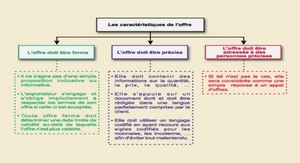WOMEN’S CONDITION IN THE SCARLET LETTER
OF NATHANIEL HAWTHORNE
HESTER AS A NATURAL HUMAN BEING
Officially she is a widow and she can begin a new relationship after her supposed widowhood. Being unable to have full control of her feelings and needing spiritual guidance she becomes confident to Dimmesdale which turns into passion. Dimmesdale is the personification of human frailty, sorrow and is young, pale and physically delicate and as a minister, he has a voice that consoles. We have two young people face to face daily. As human being may refer to good and bad traits of a person alike, love can happen with a very poor, blind, dump or even physically disabled person, it is an inborn feeling gifted to human souls by the nature and is not made but felt by human being. Pure love doesn’t lead human being to commit forbidden acts, but if that person is part of a society with strict rules as puritans, it can guide toward shameful, disgusting acts which can damage a whole family and society’s moral and social values. So Hester feels Dimmesdale so close to her that she wants to share her emotions and to connect with him; the truth is that when two hearts love each other, 5 The Scarlet Letter P.60 61 19 they want to touch, to feel. One must remember that we don’t choose love but love chooses us and all what Hester and the minister can do is to accept it for all its mystery when it comes into our life. It’s a mystery for both of them why they fall in love, how it happens and when it comes, and just as life itself is a gift that comes and goes in its own time. The coming of love must also be taken as an inexplicable gift that cannot be questioned in its way. If we do understand all these and combined with Esther‘s situation, her case can be tolerated. Hester felt connected to Dimmesdale rather than to Chillinworth, even though she is his wife. She believes that a deeply felt interaction between two people is more real than the church ceremony that bound her to Chillinworth. She and the minister are bound to mutual sin, and although this may seem as a marriage of evil, it also unites them in their common humanity. Hester Prynne has already been a mother when the story begins, Hawthorne draws a portrait of her and let the reader know that she is no one but the young woman who is “the mother of his child” 6 and further she is referred to as “the image of Divine Maternity” 7 This clarification is essential because it foretells a strong bond between the mother and the child .They both appear in almost every scene of the plot especially in those where she faces the public or the authorities. Hester is first the mother of Pearl and second she assumes another maternal function for the other women of the community as they come to her at the end of the story to seek for her pieces of advice. The kind of maternity firstly mentioned is the one that causes her all the troubles she faces and consequently she has been cast aside ;because of this isolation ,she stays away from her other New England counterparts. The link between a mother and her child is always strong and powerful ,the one Hester and Pearl entertains actually grows intensified owing to their daily situation :they both lived in an ignominious circle of seclusion and have to complete one another and as a result they ended up building a community of their own.
THE TRIPLE BURDEN
Hester Prynne’s situation in Nathaniel Hawthorne ‘s work is quite ambiguous, if we have a closer look at her delicate position in the puritan community. In this part three aspects are taking into account that is the sin, Pearl and the scarlet letter as a symbol which all constitute a heavy load for her daily suffering. A) Adultery as an unforgivable Sin Everyone has violated either moral or religious law at least once in his or her entire lifetime. On the outside, they might be “ looking pure as new-fallen snow; while their hearts are all speckled and spotted with iniquity of which they cannot rid themselves » 12 Some walk secretly with this heavy sin in their heart, while others get shamed in public because their sin is displayed openly. Since these sins are all different, the consequences and the significance may also vary in importance. In The Scarlet Letter by Nathaniel Hawthorne, Hester Prynne, Arthur Dimmesdale and Roger Chillingworth sins and all of the wrongdoings vary in significance. The story develops when Hester Prynne commits the sin of adultery. Even though Hester’s mistake was driven by innocent passion for Dimmesdale, the puritans took this seriously. By wearing the scarlet letter A on her chest, the village people look at her as an outcast. The puritans don’t look at the sin as an act of love but instead as the work of the devil. However, Hawthorne makes it so that Hester’s sin seems less serious than that of Chillingworth. Hester’s sin seems more innocent because it was driven by her affection for Dimmesdale rather than of the intelligence. Her sin can also be considered less serious because Hester is willing to accept her sin and deal with the consequences publicly. 12 The Scarlet Letter p.116 26 In Nathaniel Hawthorne’s The Scarlet Letter, the Puritan community banned all forms of sin. Sin was looked upon as evil, being connected to the devil and his dark ways. Hester Prynne, the main character of the story, was shunned by the rest of the Puritan world after committing the sin of adultery. She lived in a world where it was not accepted. She was isolated from the world around her. Their sin was unintentional and only came about because of love and passion. There love actually could have been considered good if it were not for the confines of strict Puritan society. Among all these Puritan ideals the idea of sin or the sinful nature of man is of paramount importance. Puritan believed that all men were born sinners and they then considered sin as a challenge in their life experience. Sin ,which is a transgression against divine or moral law, is closely related to the notions of good and evil. Those crucial notions permanently struggling within the human being. This has led to a never-ending concern of human beings about good and evil. What is good or evil are standards set by communities, it may then vary from a milieu to another. But there’s some constancy that is what is seen as good and evil may be the same in different parts of the world and in rather different creeds or communities. Puritan had a rather narrow vision of sin and Hawthorne had a vision of his own of sin and human condition. Nathaniel Hawthorne, in The Scarlet Letter ,criticizes puritan dogmatism and hypocrisy. He portrays the puritan belief that sin permanently change the human personality and that the sinner cannot figure out a clear understanding of their relation to God. That is a prerogative, he says, attributed to Saints. That is because of this puritan central belief that Hester and Dimmesdale, in The Scarlet Letter keep on suffering of their act of Adultery because they seems to be excluded from God’s forgiveness. Yet in spite of their mistakes in administrating justice Hawthorne thinks that they are right to their way of dealing with what they considered evil.
PEARL
In Hawthorne ‘s novel, the strict authoritarianism of Puritan patriarchy finds its object in the child Pearl, who as the living symbol of the letter becomes the target of the Puritan’s efforts to control both human sexuality, and its literary, historical expression .The Scarlet Letter, in other words, dramatizes a relationship between issues of birth: whose child is Pearl? and questions of interpretation: what does the letter mean?.Indeed ,one of the ways the text validates the centrality and legitimacy of the community’s doubt about the child is by representing it as its own investigation into its major symbol. The child Pearl is the most ambiguous character in The Scarlet Letter because she is so much more important as symbol than as agent .She expresses Hawthorne’s conceptions of child-nature as a phase of human development ,and the significance of children in relation to the system of reality in which they play a part. Unlike Hawthorne, the Puritans did not conceive of child –nature as a distinct developmental phase of human character. They look upon the infant as a person with a moral character already formed and that character was the sinful one settled upon all mankind in the decree of damnation therefore children were taught that ‘in Adam’s fall we sinned all’ and their parents were exhorted to. The character of Pearl is as much ,or ,more a symbolic function as she is the representation of a human child. In all the descriptions of Pearl , her affinity with the scarlet letter is stressed .She is its symbol, its double, its agent “ it was the scarlet letter in another form ;TSL endowed with life!!”14. Pearl’s function as a living symbol of Hester’s adultery ability, affection and role as feminine angel ,connected to the story only through Hester’s heart and emotional acuity, fails to acknowledge Hawthorne’s complexity of character’s development in Pearl. In this analysis she becomes nothing more than the scarlet letter personified. In another analysis: Pearl described by Hawthorne as the ‘effluence of her mother’s lawless passion’ is the living 14 The Scarlet Letter p.103 32 emblem of Hester’s guilt. The problem that recurs in analysis such as these is that critics are too quick to dismiss Pearl’s integral role in the novel, and furthermore, many are in disagreement over what, exactly ,the scarlet letter represents. Trying to define Pearl as merely a symbolic element becomes an endless circle of ambiguity that leaves Pearl unexplored as a significant character in the text .However when critics endow Pearl with various other functions, symbolic or not and acknowledge her central place within the text ,her true role is expended. Her name has been carefully chosen by the author to imply a ‘symbol of perfection and incorruptibility’ ;As a character, Pearl has the ability to inspire good to both her parents though she came out of an error. Often sketched as a preternatural child, she leads critics to assume that she is the main actor in the revelation of the truth of the scarlet letter. Hawthorne further contends that there is no possible understanding of the story unless we can interpret her .Pearl is identified as a human being after Dimmesdale’s public confession and becomes at the same time the artist of her own recovery and a cause of her redemption for the man who almost succeeded in hiding the whole story about her birth. Here Hawthorne describes the effects of such an act as follows “as her tears fell upon her father’s cheek, they were the pledge that she would not grow up amid human joy and sorrow, nor forever do battle with the world, but be a human in it” 15 . Hester carefully dresses Pearl in clothing that mimics the color and embroidery of the letter; this gesture also stresses the way in which the child is her mother’s creation. As such, she is both something that reflects the mother despite herself. More particularly, she reflects the mother’s deeds that gave her life(her life is never attributed to her father).
DEDICATIONS |




